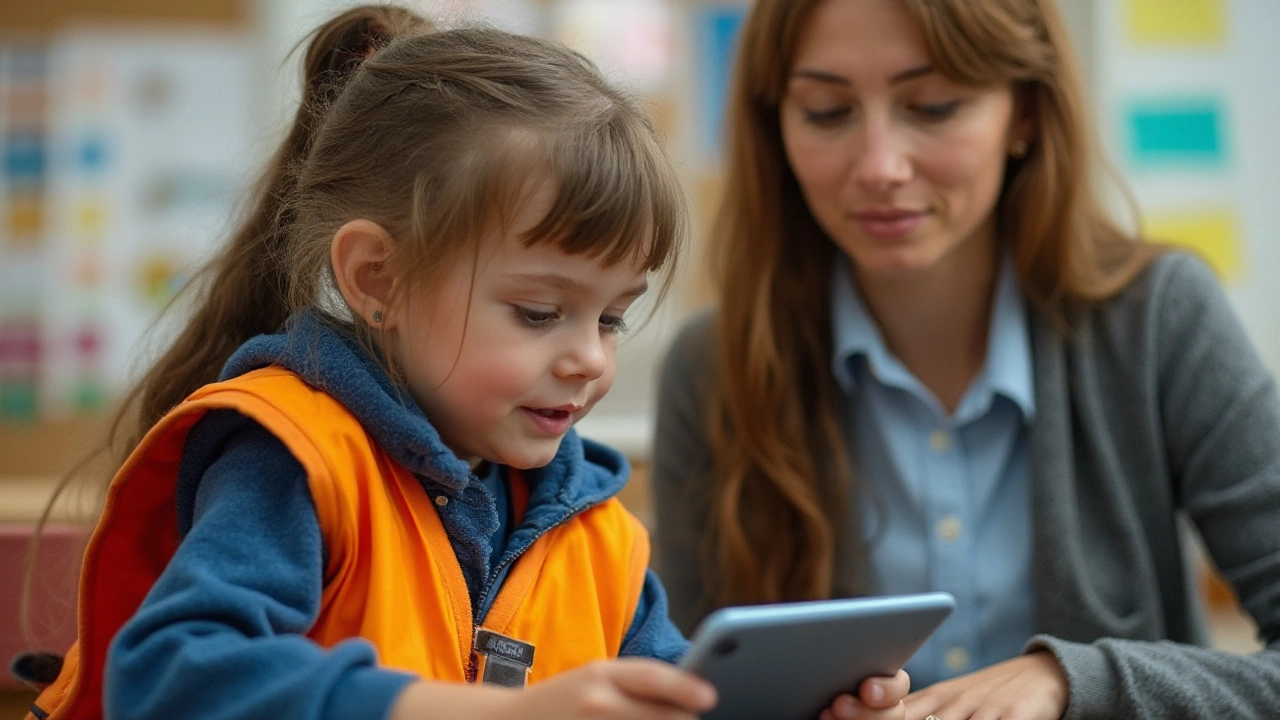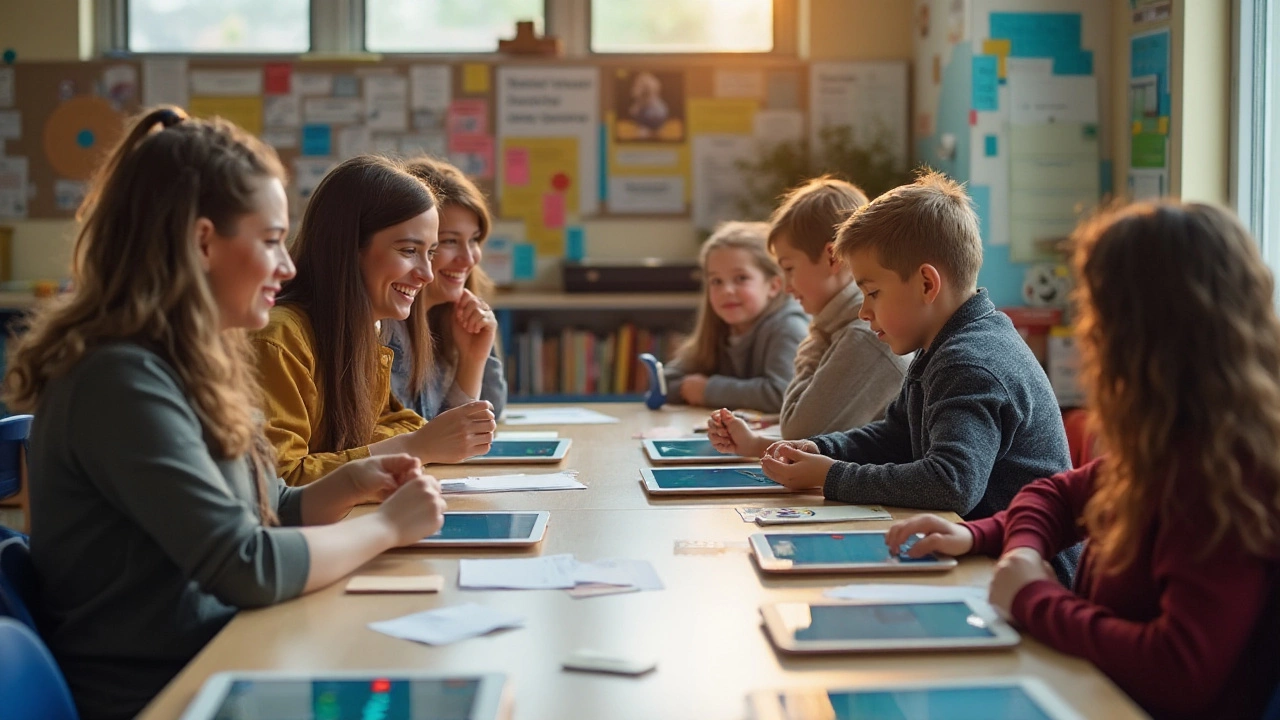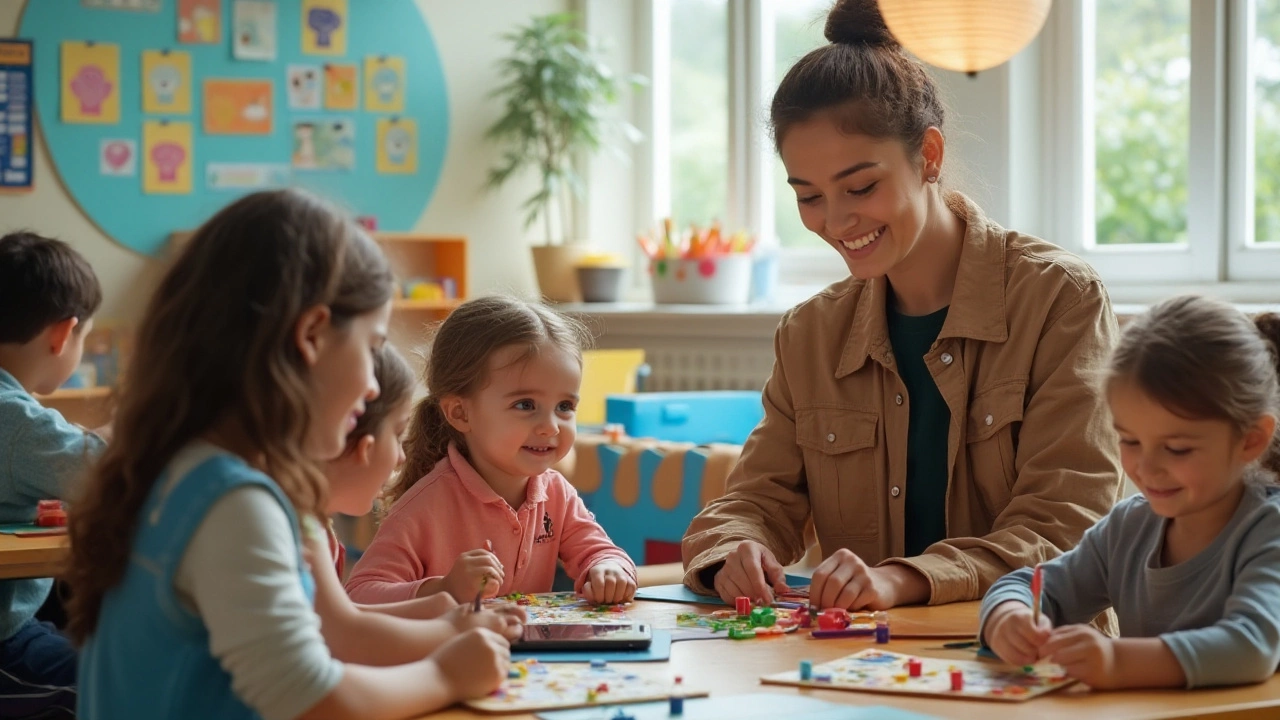In the diverse world of education, teaching learners with special needs presents unique challenges and rewarding opportunities. These learners, each with their distinct blend of abilities, can thrive with the right kind of support and understanding. For educators, embarking on this journey is both an art and a science, calling for compassion, patience, and creativity.
Crafting an inclusive environment where all students can flourish involves exploring various teaching strategies and integrating them effectively into classroom dynamics. It's about recognizing the individuality of each student and adapting methods to suit their personal learning styles. With the advancement in educational technology, new doors have opened, offering tools and resources that make learning more accessible and engaging for everyone.
Collaboration stands at the heart of success in special needs education. Engaging with families and working alongside specialists ensures a holistic approach that supports each child’s development. This partnership not only empowers students but also provides a network of care and encouragement, fostering confidence and achievement in every small victory.
- Understanding Special Needs
- Creating an Inclusive Environment
- Personalized Teaching Strategies
- Utilizing Technology in Education
- Collaborating with Families and Specialists
Understanding Special Needs
Diving into the realm of special needs education, it's crucial to have a comprehensive understanding of what constitutes special needs. This broad term encompasses a variety of conditions that can affect a person's capabilities in life, particularly in educational contexts. Whether it’s autism, dyslexia, ADHD, or physical disabilities, each condition presents its own set of challenges and strengths related to learning and interaction. Schools and educators must not only recognize these needs but tailor their approaches to accommodate and nurture each student’s potential.
Every learner is unique, and this rings especially true for children with special needs. A diagnosis often brings with it a combination of learning styles that do not fit the traditional educational models. Understanding these intricacies begins with acknowledging that these students might process information differently, sometimes excelling in ways unexpected by standard academic expectations. For example, individuals with autism often display remarkable skills in areas like music, art, and mathematics despite facing difficulties with communication and social interactions. Addressing these diverse capabilities requires a blend of cognitive flexibility and innovative teaching strategies, recognizing, as a first principle, that all students can succeed given the right tools and support.
Statistics highlight the increasing prevalence of special needs in education—about 15% of students are recognized as having disabilities in various forms, requiring individualized attention and inclusion strategies. This necessity pushes educators to continuously adapt and innovate. Specialized training programs for teachers focus on equipping them with skills to identify subtle signs of learning difficulties early on, enabling timely intervention. Moreover, by employing tools such as Individualized Education Programs (IEPs), schools can tailor educational experiences to each child's unique needs. Developing an inclusive mindset within educational institutions plays a pivotal role in breaking down barriers, creating an environment where every learner can thrive.
The true essence of special needs education lies in understanding the broader picture of a child's life. It’s not just about academic performance but also about supporting emotional and social development. Building a supportive network that includes family, therapists, and educators can significantly impact a child's growth. As noted by Dr. Temple Grandin, an advocate for autistic communities,
“There needs to be a lot more emphasis on what a child can do, instead of what he cannot do.”This perspective is central to fostering a positive, strength-based approach in education, celebrating achievements and nurturing capabilities.
Create pathways that could extend beyond pure academics. Emphasizing life skills and social adaptability alongside core subjects can often light a path to future independence and self-sufficiency for special needs learners. Schools with inclusive policies encourage peer interactions that help build these vital social skills through structured activities and collaborative projects. By nurturing empathy and cooperation among all students, educators not only fulfill academic roles but also contribute to a more compassionate and inclusive society, which is an invaluable lesson extending far beyond classroom walls.
Creating an Inclusive Environment
Building an inclusive environment in education requires a thoughtful blend of empathy, respect, and strategic planning. It is not a one-size-fits-all approach but a vibrant tapestry woven with the diverse threads of each student's needs and potentials. At its core, an inclusive environment challenged us to question traditional educational practices and redefine success for learners with unique abilities and talents. This means rethinking how classrooms are structured, how materials are presented, and most importantly, how every student is viewed as a valuable contributor to the learning community. An inclusive classroom involves accessible physical space and a culture of acceptance and encouragement that champions each student's strengths while providing comprehensive support for their challenges. As educators embrace this mindset, they transform their classrooms into places of belonging, where all students can confidently engage and flourish.
One key strategy in fostering inclusion is developing a curriculum accessible to learners with various needs. This involves offering multiple means of engagement, representation, and expression. By presenting information in diverse ways, teachers can cater to different learning styles and help students grasp complex concepts more effectively. For instance, incorporating visual aids, interactive activities, and auditory tools can make lessons more dynamic and engaging. This can be especially crucial for learners who struggle with traditional teaching methods. Technologies such as text-to-speech software, interactive whiteboards, and education apps have made it easier than ever to provide tailored educational experiences. These tools empower students to explore topics at their own pace, ensuring they remain engaged and motivated.
Classroom setup plays a significant role in creating an inclusive atmosphere. Thoughtful arrangement of workspaces can promote collaboration and interaction among students, encouraging them to support and learn from one another. An inclusive environment often involves using flexible seating arrangements and designated quiet areas, accommodating learners who may require different settings to concentrate and thrive. By offering choices, educators create an environment of responsibility and independence, allowing students to decide how and where they work best. Another aspect is displaying student work and progress visually, which fosters a sense of accomplishment and motivates continuous effort. Overall, the goal is to create a space where diverse needs are not just accommodated but embraced and celebrated. In the words of renowned educator and inclusion advocate, Rita Pierson, "Every child deserves a champion—an adult who will never give up on them, who understands the power of connection, and insists that they become the best they can possibly be."
Building an inclusive culture requires ongoing training and awareness among educators. Teachers need to stay updated on the latest research and strategies in special needs education. Workshops and professional development opportunities offer insights into inclusive practices and allow educators to share experiences and learn from one another. Collaboration with specialists also plays a crucial role in supporting students with special needs. These professionals can provide valuable input and resources to tailor teaching methods effectively. Developing action plans with set goals, regular assessments, and feedback loops ensures that students' progress is continually monitored and optimized. Inclusion is an ongoing journey, and commitment to professional growth enables educators to adapt and innovate, ensuring all students receive the support they need to succeed.

Personalized Teaching Strategies
At the heart of inclusive education is the concept of tailoring learning experiences to accommodate the diverse abilities and needs of each student. Special needs education demands an approach that acknowledges these differences and embraces them as opportunities for growth, rather than challenges. Personalizing teaching strategies is about understanding that no two learners with special needs are precisely the same, hence a one-size-fits-all approach simply doesn't suffice. To effectively personalize educational experiences, educators must first take the time to understand each child's unique learning profile, which includes their strengths, interests, and areas of challenge.
Once teachers have a grasp of a child's learning style, they can begin to design lessons that align with the student's preferences and abilities. This might involve creating multi-sensory activities that engage more than one modality at a time, thus catering to different learning styles simultaneously. For instance, a lesson on the water cycle might involve a combination of visual aids like diagrams, hands-on experiments, and interactive digital content, providing multiple entry points for understanding. Teachers who adopt this method often find that students are not only more engaged but also retain information for longer periods.
Effective communication is another critical component of personalized teaching strategies. It's important for educators to maintain an open dialogue with students to gain insights into their preferences and feedback on instructional methods. Encouraging students to express their feelings about certain activities not only empowers them but also provides invaluable information for adjusting teaching methods in real-time to best meet their needs. As renowned educator Rita Pierson once said,
"Every child deserves a champion, an adult who will never give up on them, who understands the power of connection and insists that they become the best they can possibly be."
Technology plays a vital role in personalized learning environments, offering tools that support individualized learning paths. With the right resources, teachers can create interactive and adaptive lessons that change in response to a student's input. Platforms featuring AI-driven assessments can provide educators with real-time data on student progress, highlighting areas where additional support might be needed. Integrating technology not only fosters independence in students but also allows for differentiated instruction on an unprecedented scale. To put this into perspective, a recent study found that classrooms with personalized learning platforms saw improvement in student performance by nearly 20% over traditional methods.
It's crucial that educators also consider the inclusion of social and emotional learning (SEL) in personalized plans. This aspect of education addresses the emotional and social needs of learners, which often significantly impact their ability to engage in academic tasks. Strategies might include creating safe spaces for expression, implementing peer mentoring systems, or teaching coping mechanisms and social skills. Such an emphasis on SEL skills ensures that learners are not only receiving academic knowledge but are also gaining the tools necessary for success in broader societal contexts.
Ultimately, the goal of personalized teaching strategies is to foster a sense of agency and self-efficacy within each learner. By placing students at the center of their educational journey, we enable them to become active participants in their education rather than passive recipients. This empowerment leads to a more engaging, effective, and rewarding educational experience, setting the stage for lifelong learning and personal growth. Embracing personalized teaching strategies, educators find themselves not as keepers of knowledge but as facilitators of learning, guiding their students to discover their potential and achieve their goals.
Utilizing Technology in Education
Technology has transformed the landscape of special needs education, offering innovative solutions and tools that cater to diverse learning requirements. In recent years, educators have witnessed a remarkable shift towards more accessible and adaptable learning environments, thanks to these technological advancements. Whether through interactive software, communication devices, or digital platforms, technology presents an opportunity to enhance the educational experience for learners with special needs. The adaptability of technology allows educators to design highly individualized learning experiences that cater to specific needs, making education more inclusive and effective.
One of the most significant benefits of technology in the classroom is the ability to customize learning materials. For instance, software programs such as speech-to-text applications and text-to-speech tools provide invaluable support for students with reading or writing difficulties. These tools help bridge the gap between traditional learning materials and the student’s unique needs. Tablets and smartboards have become classroom staples as they offer interactive and engaging ways to present information, capturing students' attention and facilitating better retention.
The use of multimedia resources is another aspect where technology shines. Videos, animations, and interactive games appeal to multiple senses, helping to engage students who might struggle with conventional teaching methods. These resources can simplify complex concepts, breaking them down into digestible content that accommodates a range of learning speeds and styles. The visual and auditory elements used in these resources often provide clarity and context that might be missed in text-based materials alone.
Advanced Communication Aids
Technology also plays a crucial role in enhancing communication for learners with disabilities. Augmentative and alternative communication (AAC) devices, including communication boards and speech-generating devices, have become invaluable tools in many educational settings. These devices empower students to communicate more effectively with peers and teachers, fostering inclusivity and participation. For those with physical disabilities, adaptive technology such as specialized joysticks or switches can facilitate interaction with computers and educational software, ensuring that all students can participate in classroom activities.Moreover, online platforms and educational apps have made it possible to access a vast array of resources tailored for special needs learners. Today's digital landscape is rich with tools designed to support specific needs, from math and literacy apps to virtual reality environments that offer immersive learning experiences. An engaging virtual field trip or interactive science experiment can provide students with real-world learning encounters they might not otherwise experience, broadening their understanding and sparking curiosity.
"Technology will not replace great teachers, but technology in the hands of great teachers can be transformational." — George Couros, author and educator
The Future of Learning with AI
Additionally, with the rise of artificial intelligence, adaptive learning technologies have begun personalizing education like never before. AI-powered platforms assess the learner’s progress in real-time, offering immediate feedback and adjusting the difficulty of tasks to suit the individual’s pace. Such platforms are particularly beneficial in special education settings, where the ability to fine-tune learning experiences can make a significant difference in engagement and outcomes.
Collaborating with Families and Specialists
Creating a nurturing educational experience for learners with special needs is a deeply collaborative process. It isn't just the responsibility of the educators in the classroom. Success stems from the supportive network formed by working closely with families and a wide range of specialists. This collaboration goes beyond regular communication and delves into building relationships based on trust, understanding, and a shared commitment to the child’s development.
When teachers regularly engage with parents, it allows them to gain insights into the child’s life outside the classroom, providing a comprehensive understanding of their unique needs, interests, and motivations. Parents bring invaluable context about their child's behavioral patterns, preferences, and daily routines. By involving parents in setting and achieving educational goals, educators create a more personalized learning path that pays attention to the child's individual strengths. This connectivity nurtures a team atmosphere where everyone, including the student, feels invested in the process.
Specialists such as speech therapists, occupational therapists, and psychologists provide targeted support that complements the educator's efforts. These professionals offer specialized insights and assessments, helping teachers to refine their approaches and better accommodate diverse learning requirements. For instance, regular meetings and updates ensure everyone remains informed about the learner's progress and any modifications needed. Documenting these joint efforts is crucial, ensuring that the child receives consistent support across different environments.
“We hold a common objective – to see the child flourish. This drives us to work together, adapt our methods, and celebrate every inch of progress.” – Dr. Lisa Smith, Child Psychologist.
Technology can play a pivotal role in these collaborations. Through shared digital platforms, both parents and specialists can access educational plans, progress reports, and feedback loops that keep everyone aligned. Regular workshops and training sessions for families ensure they are equipped with the knowledge and tools to support their children at home. By reinforcing what's taught in school, home environments become a seamless extension of the learning journey.
| Stakeholder | Role | Contribution |
|---|---|---|
| Parents | Primary Caregiver | Insight into daily habits and emotional support |
| Educators | Facilitators of Learning | Implementation of personalized educational strategies |
| Specialists | Subject Experts | Provide specialized assessments and therapy |
Building effective partnerships requires time, patience, and commitment. However, the impact of such collaboration is profound, paving the way for a more inclusive and supportive educational environment. Seeing the child as a whole, through various lenses, empowers all participants to tailor solutions that genuinely uplift each learner, fostering a community where every child can thrive.

